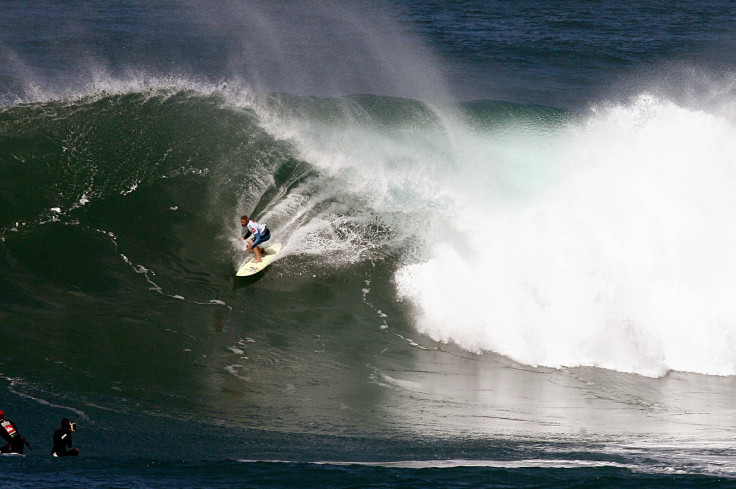Biggest Wave Ever: Record Setter In North Atlantic Not For Surfing

The World Meteorological Organization, the United Nations' weather agency, announced Tuesday it had measured a massive wave that crushed the record for the tallest in history. The wave was 62.3 feet, or 19 meters, tall. For context, that equates to about six stories.
The massive wave was measured by a buoy in the North Atlantic in 2013. The height is defined as the distance from the crest — or top — of one wave to the trough — or bottom — of the other. A commission of experts for the World Meteorological Organization (WMO) officially classified the record-breaker as "the highest significant wave height as measured by a buoy." A significant wave is defined as "the average of the highest one-third of waves measured by an instrument," which means the record-breaker was actually a series of waves.
The wave, which took place south of Iceland and North of the United Kingdom, flew past the previous record set in 2007 of 59.96 feet, also measured in the North Atlantic, a hotbed for massive waves.
"This is the first time we have ever measured a wave of 19 meters. It is a remarkable record," said WMO Assistant Secretary-General Wenjian Zhang in a statement. "It highlights the importance of meteorological and ocean observations and forecasts to ensure the safety of the global maritime industry and to protect the lives of crew and passengers on busy shipping lanes."
It's, of course, unlikely anyone is surfing this sort of wave anytime soon. But for comparison's sake, it makes a number of the world's tallest waves look tiny. The Banzai Pipeline in Oahu, Hawaii, which Smithsonian Magazine called "the most dangerous surf wave" in the world rises up to about 30 feet.
Other one-off waves, however, have actually reportedly been taller than the 60-foot series measured by the buoy in the North Atlantic. An earthquake caused in 1958 in Alaska’s Lituya Bay caused a tsunami that led to wave that reached 100 feet in height, according to the Smithsonian. Tsunamis are different from wind-blown waves, however, since they are much longer and more destructive.
© Copyright IBTimes 2024. All rights reserved.












